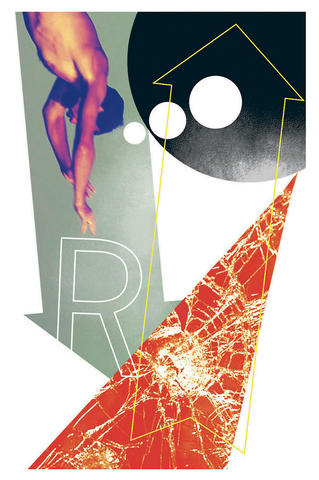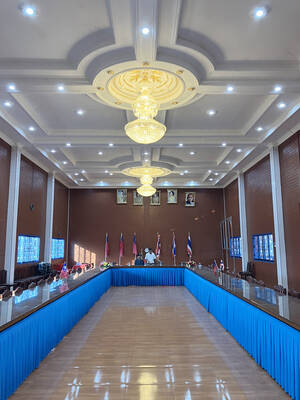Last January in Freehold Township, New Jersey, a car driven by a 17-year-old high school student, with two fellow students as passengers, passed a car being driven by another teenager at 112km per hour in an 80km zone. The passing vehicle crashed into an oncoming van. Three boys and the 68-year-old van driver were killed.
It is an all too familiar tale, prompting parents and school officials alike to wonder why risky behavior is so common among teenagers and what might be done to curtail it. Is it that teenagers think that they are immortal or invulnerable, immune to the hazards adults see so clearly? Or do they not appreciate the risks involved and need repeated reminders of the dangers inherent in activities like driving too fast, driving drunk, having unprotected sex, experimenting with drugs, binge drinking, jumping into unknown waters, you name it?
None of the above, says Valerie Reyna, professor of human development and psychology at the New York State College of Human Ecology at Cornell. The facts are quite the opposite. Scientific studies have shown that adolescents are very well aware of their vulnerability and that they actually overestimate their risk of suffering negative effects from activities like drinking and unprotected sex.

ILLUSTRATION: NY TIMES NEWS SERVICE
For example, a study by researchers at the University of California, San Francisco, found that teenagers were more likely than adults to overestimate risks for every outcome studied, from low-probability events like contracting HIV to higher-probability ones like acquiring more common sexually transmitted diseases or becoming pregnant from a single act of unprotected sex.
"We found that teenagers quite rationally weigh benefits and risks," Reyna said in a recent interview. "But when they do that, the equation delivers the message to go ahead and do that, because to the teen the benefits outweigh the risks."
For example, she said: "The risk of pregnancy from a single act of unprotected sex is quite small, perhaps one chance in 12, and the risk of contracting HIV, about one in 500, is very much smaller than that. We're not thinking logically; they are."
For that reason, Reyna and Frank Farley, a professor at Temple University and past president of the American Psychological Association, noted last June in an article in Scientific American Reports that traditional programs that appeal to teenagers' rationality "are inherently flawed, not because teens fail to weigh risks against benefits," but because "teens tend to weight benefits more heavily than risks when making decisions."
As for perceptions of invulnerability, a national study of 3,544 teenagers a decade ago found that their own estimates of their risk of dying were very much higher than the actual risk. Because adolescents already feel so vulnerable, showing them photos or films of fatal car crashes may do nothing to reduce future risk-taking.
"It now becomes clearer why traditional intervention programs fail to help many teenagers," Reyna and Farley wrote. "Although the programs stress the importance of accurate risk perception, young people already feel vulnerable and overestimate their risks."
In Reyna's view, inundating teenagers with factual risk information could backfire, leading them to realize that behaviors like unprotected sex are less risky than they thought. Using an analytical approach of weighing risks versus benefits is "a slippery slope that all too often results in teens' thinking that the benefits outweigh the risks," she said.
A NEW APPROACH
Based on what she and others have learned about how teenagers react to risky choices, Reyna, co-director of the Center for Behavioral Economics and Decision Research at Cornell, and her colleague Charles Brainerd are testing a new approach to adolescent risk prevention.
She explained that as people grew older and more experienced, they became more intuitive, and more of their decisions were based on what she calls "gist," an overall sense of what is the best course of action.
This approach, in which "one sees the forest more than the trees," enables adults to reach the bottom line more quickly and, in the process, reduce their risky behaviors.
For example, while an adolescent might consider playing Russian roulette for a US$1 million payoff, a normal adult would not give it a moment's thought. Cutting directly to the chase, the adult would be more inclined to think: "No way! No amount of money is worth a one-in-six chance of dying."
"Young people don't get it," Reyna said. "They don't get the gist of a situation. Gist is based on one's culture, background and experiences, and experience is what teens lack."
A gist-based approach to decision making results in simple, black-and-white conclusions of good or bad, safe or dangerous, she and Farley wrote.
How can "gist" be created? After a young woman I knew became a paraplegic after swerving her car to avoid hitting a squirrel, I trained myself mentally not to brake or swerve in that situation, and I urged my sons and daughters-in-law to do the same. The gist here is that the life of a squirrel is not worth the possible consequences to me or anyone else on the road.
Likewise, in helping a teenage girl resist spontaneous, unprotected sex, a gist-based approach has her practicing ways to say "no" and not worry about losing her boyfriend. A 15-year-old who already had one unintended pregnancy and who participated in the "intuitive, gist-enhanced intervention program" that Reyna and Farley devised put it this way: "In talking about all the different ways to say 'no,' I've actually used them, which makes me feel much more comfortable. And I feel confident. I don't feel stupid by saying 'no.' And even if people think I'm stupid, that's their problem."
SUPERVISE THEM
Teenagers need "practice at recognizing cues in the environment that signal possible danger before it's too late to act," the two experts urged in a 44-page review of adolescent decision making published in September 2006 in the journal Psychological Science in the Public Interest.
At the same time, Reyna warned: "Younger adolescents don't learn from consequences as well as older adolescents do. So rather than relying on them to make reasoned choices or to learn from the school of hard knocks, a better approach is to supervise them."
In other words, young teenagers need to be protected from themselves by removing opportunities for risk-taking - for example, by filling their time with positive activities and protecting them from risky situations that are likely to be tempting or that require "behavioral inhibition."
A young teenage girl should not be left alone in the house with her boyfriend, and responsible adults should be omnipresent and alcohol absent when teenagers have parties.

May 26 to June 1 When the Qing Dynasty first took control over many parts of Taiwan in 1684, it roughly continued the Kingdom of Tungning’s administrative borders (see below), setting up one prefecture and three counties. The actual area of control covered today’s Chiayi, Tainan and Kaohsiung. The administrative center was in Taiwan Prefecture, in today’s Tainan. But as Han settlement expanded and due to rebellions and other international incidents, the administrative units became more complex. By the time Taiwan became a province of the Qing in 1887, there were three prefectures, eleven counties, three subprefectures and one directly-administered prefecture, with

Taiwan Power Co (Taipower, 台電) and the New Taipei City Government in May last year agreed to allow the activation of a spent fuel storage facility for the Jinshan Nuclear Power Plant in Shihmen District (石門). The deal ended eleven years of legal wrangling. According to the Taipower announcement, the city government engaged in repeated delays, failing to approve water and soil conservation plans. Taipower said at the time that plans for another dry storage facility for the Guosheng Nuclear Power Plant in New Taipei City’s Wanli District (萬里) remained stuck in legal limbo. Later that year an agreement was reached

What does the Taiwan People’s Party (TPP) in the Huang Kuo-chang (黃國昌) era stand for? What sets it apart from their allies, the Chinese Nationalist Party (KMT)? With some shifts in tone and emphasis, the KMT’s stances have not changed significantly since the late 2000s and the era of former president Ma Ying-jeou (馬英九). The Democratic Progressive Party’s (DPP) current platform formed in the mid-2010s under the guidance of Tsai Ing-wen (蔡英文), and current President William Lai (賴清德) campaigned on continuity. Though their ideological stances may be a bit stale, they have the advantage of being broadly understood by the voters.

In a high-rise office building in Taipei’s government district, the primary agency for maintaining links to Thailand’s 108 Yunnan villages — which are home to a population of around 200,000 descendants of the Chinese Nationalist Party (KMT) armies stranded in Thailand following the Chinese Civil War — is the Overseas Community Affairs Council (OCAC). Established in China in 1926, the OCAC was born of a mandate to support Chinese education, culture and economic development in far flung Chinese diaspora communities, which, especially in southeast Asia, had underwritten the military insurgencies against the Qing Dynasty that led to the founding of